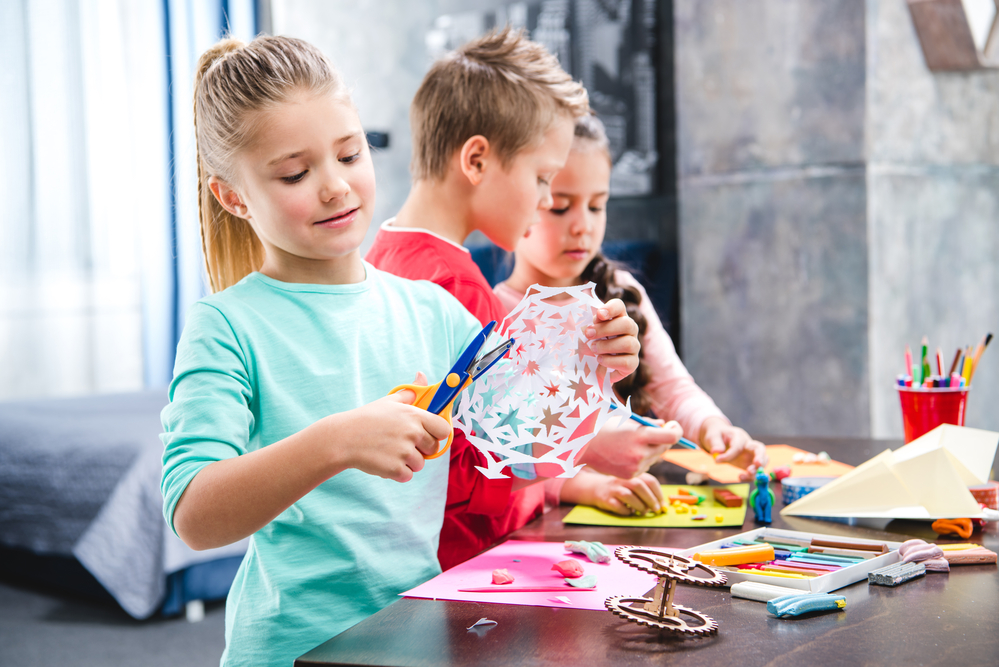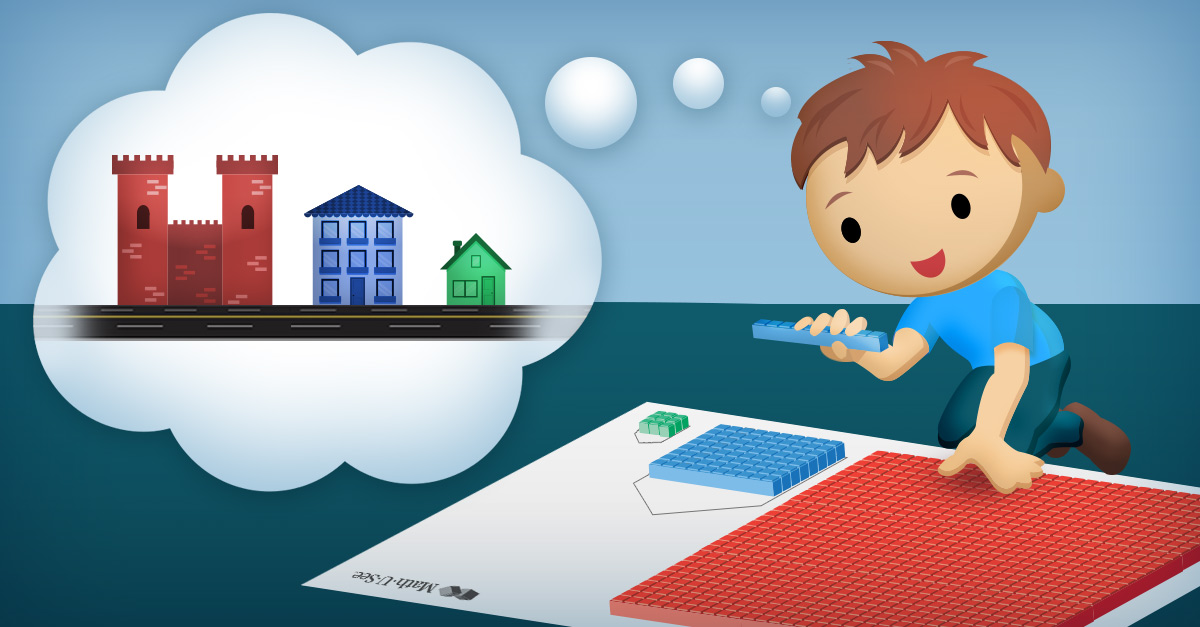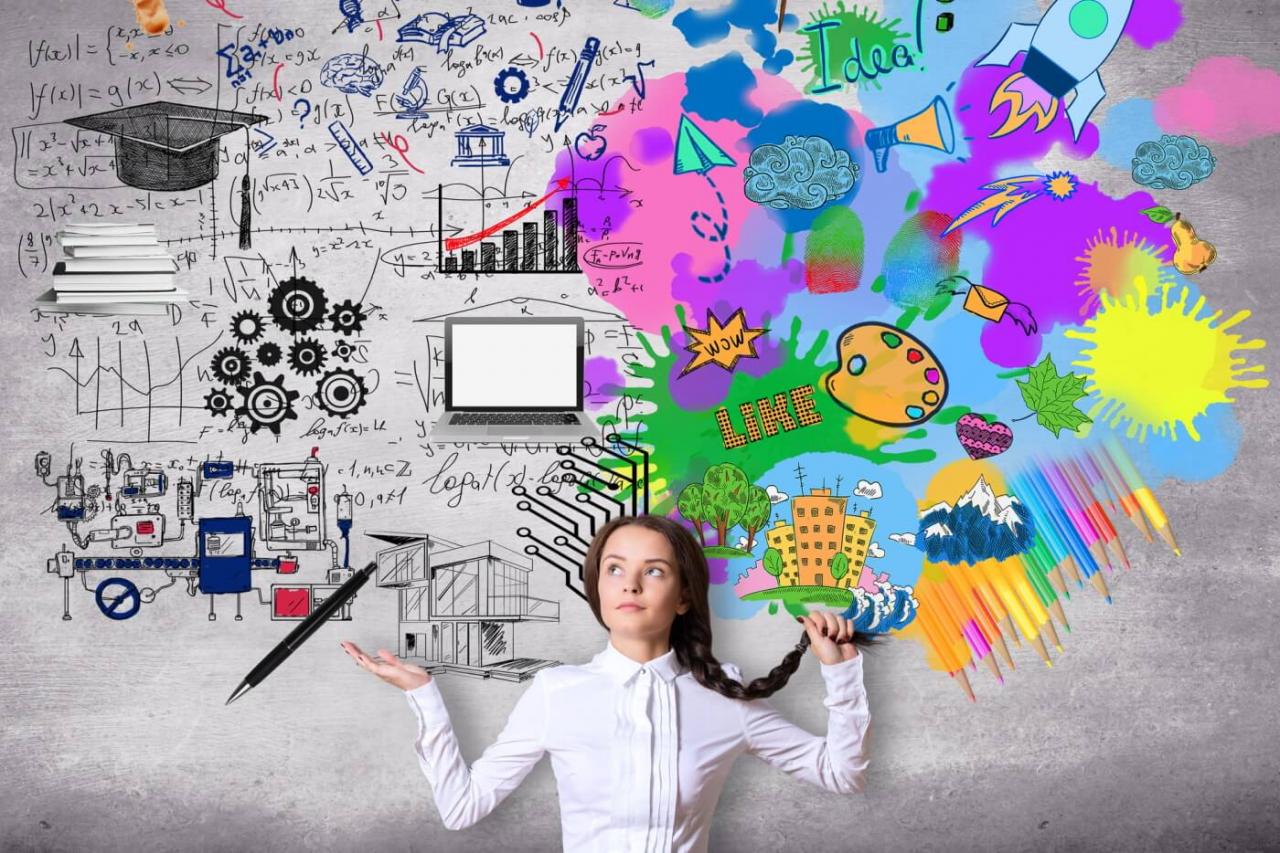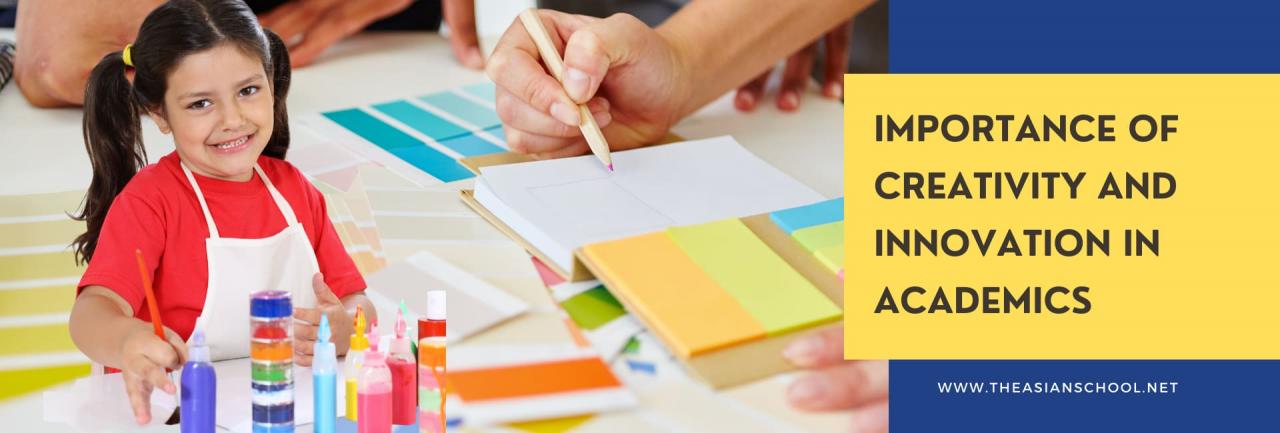The benefits of incorporating experiential learning into curriculum design are undeniable. Moving beyond traditional lecture-based learning, experiential education immerses students in real-world scenarios, fostering deeper understanding and crucial skill development. This approach transforms the classroom into a dynamic laboratory where knowledge isn’t just passively absorbed but actively constructed through hands-on projects, simulations, and real-world applications. From boosting critical thinking to enhancing collaboration, the advantages are far-reaching and transformative for both students and educators.
This exploration delves into the core principles of experiential learning, contrasting it with traditional methods and showcasing diverse methodologies like problem-based learning and service-learning. We’ll examine its impact on cognitive and affective development, offering practical strategies for curriculum integration and addressing potential challenges. The ultimate goal? To equip educators with the tools to design enriching learning experiences that empower students to thrive.
Defining Experiential Learning in Curriculum Design

Experiential learning flips the traditional classroom script. Instead of passively absorbing information, students actively engage with the material, transforming knowledge into practical skills and deep understanding. This approach moves beyond rote memorization, fostering critical thinking, problem-solving abilities, and a more profound connection to the subject matter. It’s about learning
by doing*.
Experiential learning hinges on several core principles. It emphasizes active participation, reflection on experiences, and the application of knowledge in real-world contexts. Unlike traditional methods that rely heavily on lectures and textbook readings, experiential learning prioritizes hands-on activities, real-world projects, and opportunities for self-discovery. The process often involves a cycle of experience, reflection, conceptualization, and application, allowing students to continuously refine their understanding.
Experiential Learning Methodologies
Various methodologies facilitate experiential learning. Each offers unique approaches to engage students and promote deeper learning. The following table highlights some key examples.
| Method | Description | Application in Curriculum | Benefits |
|---|---|---|---|
| Problem-Based Learning (PBL) | Students tackle complex, real-world problems through collaborative inquiry and critical thinking. | A medical school might present students with a case study of a patient exhibiting specific symptoms, requiring them to diagnose the issue through research and analysis. | Develops critical thinking, problem-solving, and teamwork skills. Fosters self-directed learning. |
| Service-Learning | Students engage in community service while reflecting on their experiences to connect academic learning with social responsibility. | Students in a sociology class could volunteer at a local homeless shelter, then analyze their experiences in relation to sociological concepts like social inequality. | Develops civic engagement, empathy, and a sense of social responsibility. Connects academic learning to real-world issues. |
| Simulations | Students participate in realistic scenarios that mimic real-world situations, allowing them to practice skills and make decisions in a safe environment. | Business students might participate in a simulated stock market, learning about investment strategies and risk management through hands-on experience. | Provides a risk-free environment to practice skills and make decisions. Offers immediate feedback and opportunities for improvement. |
| Apprenticeships | Students work alongside experienced professionals in a specific field, gaining practical skills and mentorship. | A carpentry apprenticeship allows a student to learn building techniques and industry practices under the guidance of a master carpenter. | Develops practical skills and industry knowledge. Provides valuable mentorship and networking opportunities. |
Pedagogical Approaches Supporting Experiential Learning
Effective experiential learning requires thoughtful pedagogical approaches. Facilitators must create a supportive environment that encourages active participation, critical reflection, and collaborative learning. This includes providing clear learning objectives, structuring activities that promote engagement, and offering regular opportunities for feedback and assessment. A crucial element is fostering a culture of reflection, encouraging students to analyze their experiences, connect them to theoretical concepts, and identify areas for improvement.
This reflective practice is essential for translating experience into lasting learning. Furthermore, effective facilitation involves providing scaffolding and support, adjusting the level of guidance to meet the needs of individual learners. The goal is to empower students to become independent and self-directed learners, capable of applying their knowledge and skills in diverse contexts.
Benefits for Students

Experiential learning isn’t just about hitting the books; it’s about actively engaging with the material, transforming passive learning into a dynamic, transformative experience. This approach significantly boosts students’ cognitive abilities and skill sets, preparing them for the complexities of the real world far beyond what traditional classroom settings can offer. The benefits are multifaceted, impacting everything from critical thinking to self-awareness.Experiential learning profoundly impacts students’ cognitive development, fostering a deeper understanding of concepts and enhancing their ability to apply knowledge in practical situations.
Experiential learning boosts student engagement and practical skills, moving beyond theoretical knowledge. For instance, understanding financial literacy, a crucial life skill, can be enhanced by learning to critically analyze documents like apartment lease agreements; check out this guide on comparing apartment lease agreements and hidden fees to see what I mean. This real-world application solidifies learning and prepares students for the complexities of adult life, ultimately making experiential learning invaluable.
This active learning process strengthens neural pathways, leading to more robust and lasting knowledge retention.
Critical Thinking and Problem-Solving Skills Enhancement
Experiential learning provides ample opportunities for students to grapple with real-world challenges, demanding they analyze situations, identify key issues, and devise effective solutions. For instance, a student participating in a community development project might encounter unexpected obstacles, forcing them to think critically, adapt their strategies, and ultimately, develop more robust problem-solving skills. This hands-on approach contrasts sharply with theoretical learning, where problem-solving often remains a largely abstract exercise.
The experience itself becomes a powerful learning tool, refining their ability to approach problems systematically and creatively.
Experiential learning boosts engagement and knowledge retention, making curriculum design more impactful. To maximize this effect online, educators should check out best practices for online learning and teaching effectiveness for strategies that enhance digital learning environments. By blending these best practices with experiential activities, educators can create truly transformative learning experiences.
Creativity and Innovation Fostering, The benefits of incorporating experiential learning into curriculum design
The open-ended nature of many experiential learning activities encourages creative thinking and innovation. When faced with real-world problems, students are less constrained by pre-defined solutions and more likely to explore unconventional approaches. Imagine students designing and building a prototype for a sustainable energy solution – the process inherently demands creativity, pushing them beyond textbook knowledge to explore innovative solutions.
The iterative nature of design thinking, a cornerstone of many experiential learning activities, allows for experimentation, failure, and refinement, all crucial elements in fostering innovation.
Communication, Collaboration, and Teamwork Abilities Enhancement
Effective communication, collaboration, and teamwork are essential skills in today’s interconnected world. Experiential learning provides a natural context for developing these skills.
- Group projects: Collaborative projects, such as building a robot or conducting a scientific experiment, necessitate effective communication and teamwork to achieve a common goal. Students learn to negotiate, compromise, and leverage each other’s strengths.
- Simulations and role-playing: Simulations of real-world scenarios, such as a business negotiation or a medical emergency, require students to communicate effectively under pressure and work collaboratively to find solutions.
- Community engagement: Participating in community service projects demands strong communication skills to interact with community members and collaborate effectively on shared goals. Students learn to articulate their ideas, listen actively, and work effectively as part of a team.
Self-Awareness and Metacognitive Skills Improvement
Experiential learning encourages self-reflection and the development of metacognitive skills – the ability to think about one’s own thinking processes. Students learn to identify their strengths and weaknesses, understand their learning styles, and adapt their strategies accordingly. For example, a student involved in a research project might reflect on their research methods, identifying areas for improvement and refining their approach.
This reflective process leads to increased self-awareness and a deeper understanding of their own learning journey. This metacognitive awareness is crucial for continuous learning and personal growth.
Benefits for Students
Experiential learning goes beyond textbook knowledge; it fosters crucial affective and social skills vital for navigating the complexities of life beyond the classroom. By actively engaging with real-world scenarios and challenges, students develop a deeper understanding of themselves and their place in society, ultimately shaping them into well-rounded individuals prepared for future success.Experiential learning significantly impacts students’ personal growth, strengthening their emotional intelligence and interpersonal skills.
This holistic development is as important as academic achievement, equipping students with the resilience and adaptability needed to thrive in a constantly evolving world.
Self-Confidence and Resilience Development
Participation in experiential learning activities, such as community projects, internships, or research projects, provides students with opportunities to overcome challenges and build their self-confidence. Successfully navigating these challenges, even amidst setbacks, cultivates resilience – the ability to bounce back from adversity. For instance, a student participating in a robotics competition might experience initial failures in building their robot. However, through perseverance and problem-solving, they learn to overcome these obstacles, ultimately boosting their self-esteem and fostering a growth mindset.
This experience translates into increased self-efficacy and a belief in their ability to handle future challenges.
Responsibility and Civic Engagement Promotion
Experiential learning instills a strong sense of responsibility. When students are actively involved in projects that benefit their community, they develop a deeper understanding of their roles as citizens. For example, participating in a local environmental cleanup project not only teaches them about environmental issues but also instills a sense of ownership and responsibility for their community’s well-being.
This active participation fosters civic engagement, encouraging them to become active and responsible members of society. They learn the importance of collaboration, compromise, and contributing to the greater good.
Empathy and Understanding of Diverse Perspectives Enhancement
Experiential learning often involves interacting with individuals from diverse backgrounds and perspectives. This interaction fosters empathy and understanding. Consider a student participating in a service-learning project working with underprivileged children. This experience allows them to gain firsthand insights into the challenges faced by these children and develop a deeper appreciation for their resilience and strength. This direct exposure to different cultures and circumstances breaks down stereotypes and promotes tolerance and inclusivity.
Increased Student Motivation and Engagement
Let’s imagine a high school history class incorporating a historical reenactment. Instead of passively reading about a historical event, students actively participate in it, researching, preparing costumes, and performing the event for the class and potentially the community. This active learning approach significantly boosts their motivation and engagement. The hands-on experience makes the learning process more memorable and meaningful, leading to a deeper understanding of the historical context.
This is in stark contrast to traditional methods, where students may find the subject matter dry and unengaging. The reenactment fosters collaboration, creativity, and a sense of ownership over their learning, leading to improved academic performance and a more positive attitude towards learning.
Curriculum Design and Implementation Strategies: The Benefits Of Incorporating Experiential Learning Into Curriculum Design

Integrating experiential learning effectively requires careful curriculum design and a strategic implementation plan. This involves not only selecting appropriate activities but also adapting assessment methods and fostering a supportive learning environment. The following sections detail practical strategies for educators to successfully incorporate experiential learning into their teaching.
Sample Experiential Learning Curriculum: A History Curriculum Focused on the American Revolution
This curriculum unit on the American Revolution uses a project-based approach, allowing students to actively engage with historical concepts. The unit begins with an introductory lesson on the causes of the revolution, followed by a series of activities designed to foster deeper understanding. Students will engage in debates simulating colonial assemblies, research primary source documents to create presentations on key figures, and design and construct a model of a colonial town.
A culminating project involves creating a documentary film showcasing their research and understanding of the revolution. The assessment will include participation in debates, quality of research presentations, the accuracy and detail of the colonial town model, and the overall quality and historical accuracy of the documentary film.
Step-by-Step Guide for Integrating Experiential Learning
Integrating experiential learning into existing curricula requires a phased approach. First, identify learning objectives and align them with appropriate experiential activities. Next, carefully select activities that are engaging, relevant, and feasible within the available resources and time constraints. Third, provide clear instructions and support to students throughout the process. Fourth, incorporate regular feedback mechanisms to guide student learning and make adjustments as needed.
Finally, assess student learning using diverse methods that accurately reflect their engagement and understanding. This iterative process ensures that the experiential learning activities effectively contribute to the overall learning goals.
Assessment Methods for Experiential Learning Contexts
Effective assessment in experiential learning goes beyond traditional tests. It should capture the process of learning as well as the outcomes.
- Project-based assessments: Evaluating the quality, creativity, and depth of understanding demonstrated in student projects, such as the documentary film in the American Revolution example.
- Portfolios: Compiling student work, including reflections, observations, and artifacts from experiential activities, providing a holistic view of their learning journey.
- Peer and self-assessment: Encouraging students to reflect on their learning and provide feedback to their peers, promoting metacognition and collaborative learning.
- Observations and anecdotal records: Documenting student participation, engagement, and problem-solving skills during experiential activities.
- Rubrics: Using clearly defined criteria to evaluate student performance on specific tasks or projects, ensuring consistent and fair assessment.
Best Practices for Creating a Supportive Learning Environment
A supportive learning environment is crucial for successful experiential learning. This includes providing clear expectations, fostering collaboration, encouraging risk-taking, and providing timely and constructive feedback. Open communication between the educator and students is vital. The classroom should be a safe space where students feel comfortable exploring, experimenting, and making mistakes. Furthermore, incorporating elements of choice and autonomy in the experiential activities can increase student engagement and ownership of their learning.
Providing opportunities for reflection and metacognition further enhances the learning process.
Addressing Challenges and Limitations
Implementing experiential learning, while offering significant benefits, isn’t without its hurdles. Resource constraints, logistical complexities, and the challenge of effectively assessing learning outcomes are common obstacles that educators need to proactively address to ensure successful program implementation. Careful planning and strategic approaches are crucial to maximizing the impact of experiential learning while minimizing potential setbacks.
Successfully integrating experiential learning requires a multifaceted approach that considers the unique context of each institution and program. Overcoming the inherent challenges requires a proactive strategy involving careful resource allocation, logistical planning, and the development of robust assessment methods. This ensures that the benefits of experiential learning are realized without being undermined by practical limitations.
Resource Constraints and Logistical Difficulties
Resource constraints, including funding limitations and access to suitable facilities or equipment, can significantly hinder the implementation of experiential learning. For example, field trips, internships, or community-based projects often necessitate transportation costs, materials, and supervision. Logistical challenges, such as scheduling conflicts, coordinating with external partners, and ensuring adequate safety measures, can also pose significant obstacles. To mitigate these challenges, institutions can explore creative funding solutions, such as grant applications, partnerships with community organizations, and leveraging existing resources.
Careful planning and efficient scheduling are essential to minimize logistical complications. For instance, a university might partner with local businesses to provide internship opportunities, thereby reducing costs and ensuring access to relevant industry experiences. Likewise, utilizing existing campus facilities for project-based learning can help reduce logistical burden.
Assessment Complexities in Experiential Learning
Assessing learning outcomes in experiential learning contexts presents unique challenges. Traditional methods, such as written exams, may not adequately capture the complex skills and knowledge acquired through hands-on experiences. Developing effective assessment tools that accurately reflect the learning objectives requires careful consideration. This might involve incorporating diverse assessment methods, such as portfolios, presentations, peer evaluations, and reflective journals, to gain a comprehensive understanding of student learning.
For example, a student completing a community service project might be assessed based on their project proposal, their work log, their final presentation, and feedback from community partners. The use of rubrics and clear assessment criteria is vital to ensure fairness and transparency.
Cost-Benefit Analysis of Experiential Learning Approaches
Different experiential learning approaches vary significantly in terms of cost and benefits. While some, such as simulations or case studies, might be relatively inexpensive to implement, others, like internships or study abroad programs, can be considerably more costly. However, the long-term benefits of these more expensive approaches often outweigh the initial investment. For instance, an internship program might require funding for student stipends and employer partnerships, but it can lead to enhanced employability and higher earning potential for graduates.
A cost-benefit analysis should consider factors such as the potential return on investment (ROI) in terms of student outcomes, improved employability, and long-term career prospects. The analysis should also consider intangible benefits, such as increased student engagement and motivation.
Limitations of Experiential Learning and Mitigation Strategies
Experiential learning is not without its limitations. For example, the learning environment might not always be perfectly controlled, and unforeseen circumstances could disrupt planned activities. Furthermore, the effectiveness of experiential learning can vary depending on factors such as student motivation, prior knowledge, and the quality of the learning experience itself. To mitigate these limitations, instructors should carefully select and design learning experiences, providing clear learning objectives, adequate support, and opportunities for reflection.
Regular feedback and monitoring of student progress are essential to ensure the learning experience remains effective and engaging. Providing students with clear expectations, pre-experience preparation, and post-experience reflection activities can significantly enhance the effectiveness of the learning experience. Furthermore, incorporating contingency plans to address potential disruptions or unforeseen challenges can ensure the successful implementation of experiential learning initiatives.
Measuring the Impact of Experiential Learning

Accurately measuring the effectiveness of experiential learning programs is crucial for demonstrating their value and justifying their continued inclusion in curricula. This involves employing a mixed-methods approach, combining both quantitative and qualitative data collection techniques to gain a comprehensive understanding of student learning outcomes and overall program impact. A robust evaluation strategy ensures that resources are allocated effectively and that the program continually adapts to meet the evolving needs of students.Effective evaluation of experiential learning programs requires a multifaceted approach.
This involves carefully selecting appropriate methods to gather both quantitative and qualitative data, analyzing this data to identify trends and correlations, and finally, presenting the findings in a clear and compelling manner that showcases the program’s positive impact on student achievement and personal development.
Methods for Evaluating Experiential Learning Programs
Several methods can be employed to assess the effectiveness of experiential learning initiatives. These methods provide a comprehensive view of the impact, going beyond simple test scores to encompass broader learning gains. Pre- and post-program assessments, using both standardized tests and customized instruments, allow for tracking changes in knowledge and skills. Observations of student performance during the experiential activities themselves provide valuable qualitative data.
Finally, gathering feedback from students, instructors, and stakeholders through surveys and interviews provides rich insights into the overall effectiveness and impact of the program.
Examples of Qualitative and Quantitative Data
Quantitative data might include pre- and post-test scores measuring knowledge gain in a specific subject area, a comparison of student grades before and after participation in the program, or the number of students who successfully complete the program. Qualitative data could include student reflections on their learning experience, instructor observations on student engagement and problem-solving skills, and feedback from employers regarding the skills and preparedness of graduates who participated in experiential learning.
For example, a pre- and post-test on problem-solving skills could show a statistically significant improvement in scores after completing a design-thinking project. Simultaneously, student reflections might reveal increased confidence and a deeper understanding of the design process.
Analyzing Data to Demonstrate Impact
Analyzing the collected data involves comparing pre- and post-program measures to identify changes in student knowledge, skills, and attitudes. Statistical analysis can be used to determine the significance of these changes. Qualitative data, such as student reflections and instructor observations, can be thematically analyzed to identify recurring patterns and insights into the learning process. For instance, comparing pre- and post-program survey results on self-efficacy might reveal a statistically significant increase in students’ confidence in their abilities after completing an internship.
Thematic analysis of student reflections could then uncover the specific aspects of the internship that contributed to this increased confidence.
Visual Representation of Experiential Learning Impact
A simple bar graph could effectively illustrate the impact. The x-axis would represent different student outcome measures (e.g., knowledge, skills, confidence, critical thinking). The y-axis would represent the level of each outcome, measured before and after the experiential learning program. Two bars for each outcome would visually compare pre-program and post-program levels. Taller bars for post-program measures would clearly demonstrate the positive impact of experiential learning on each outcome.
For instance, a bar representing “problem-solving skills” would show a significantly taller bar after the program, visually representing the improvement achieved. This visual representation provides a clear and concise summary of the program’s effectiveness in enhancing various student outcomes.

